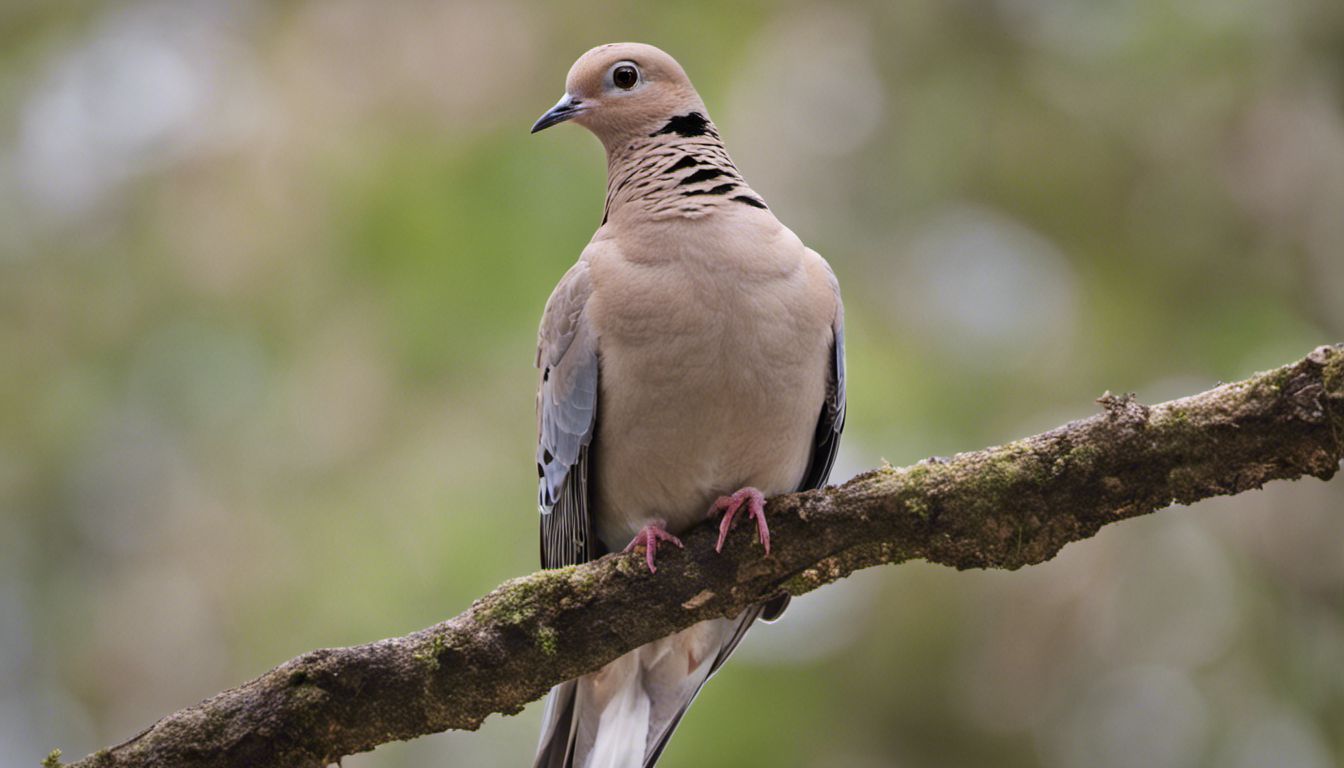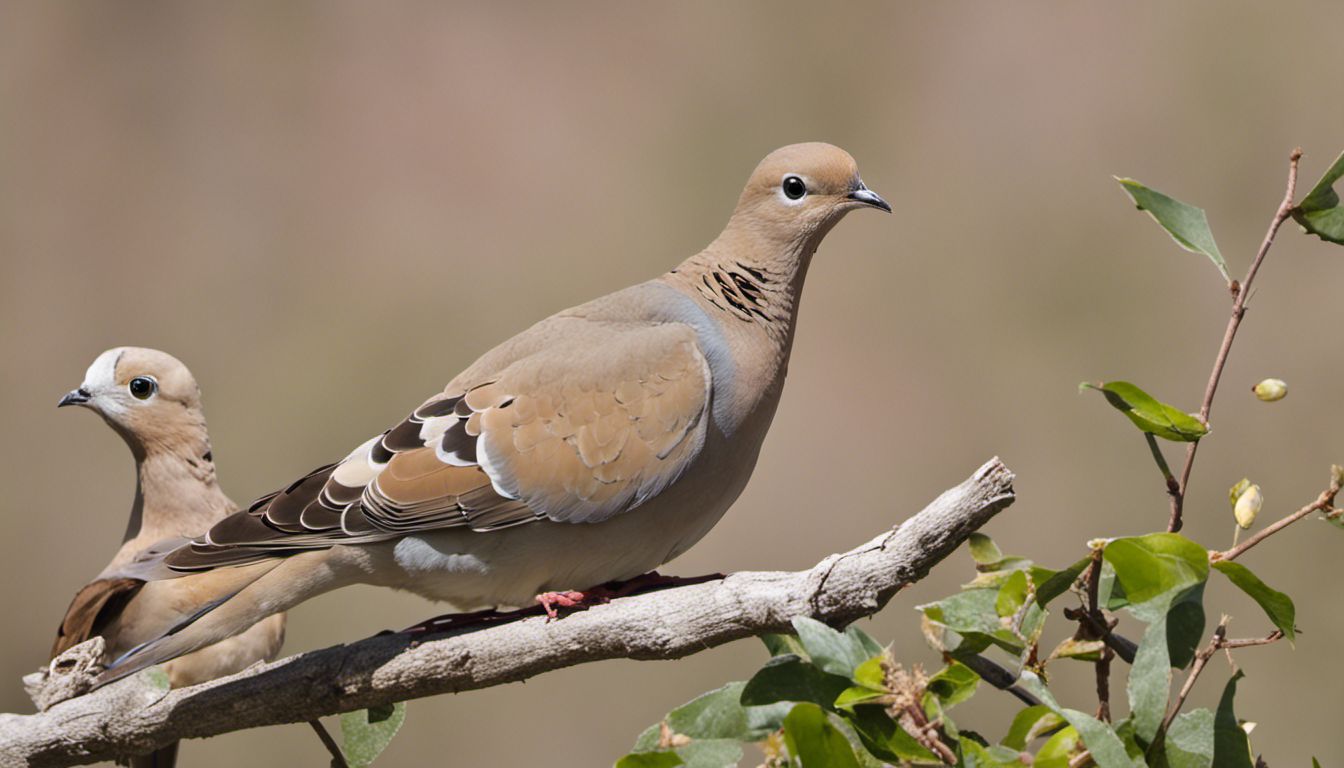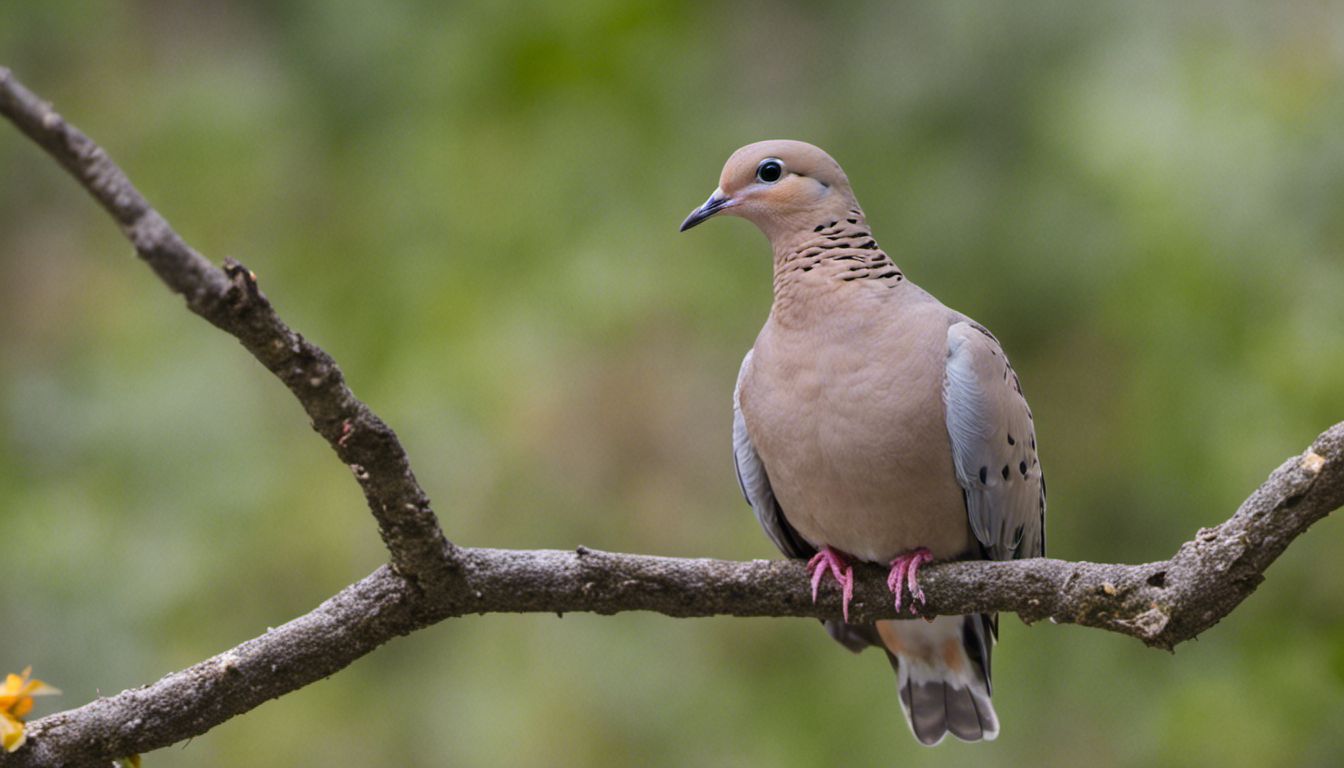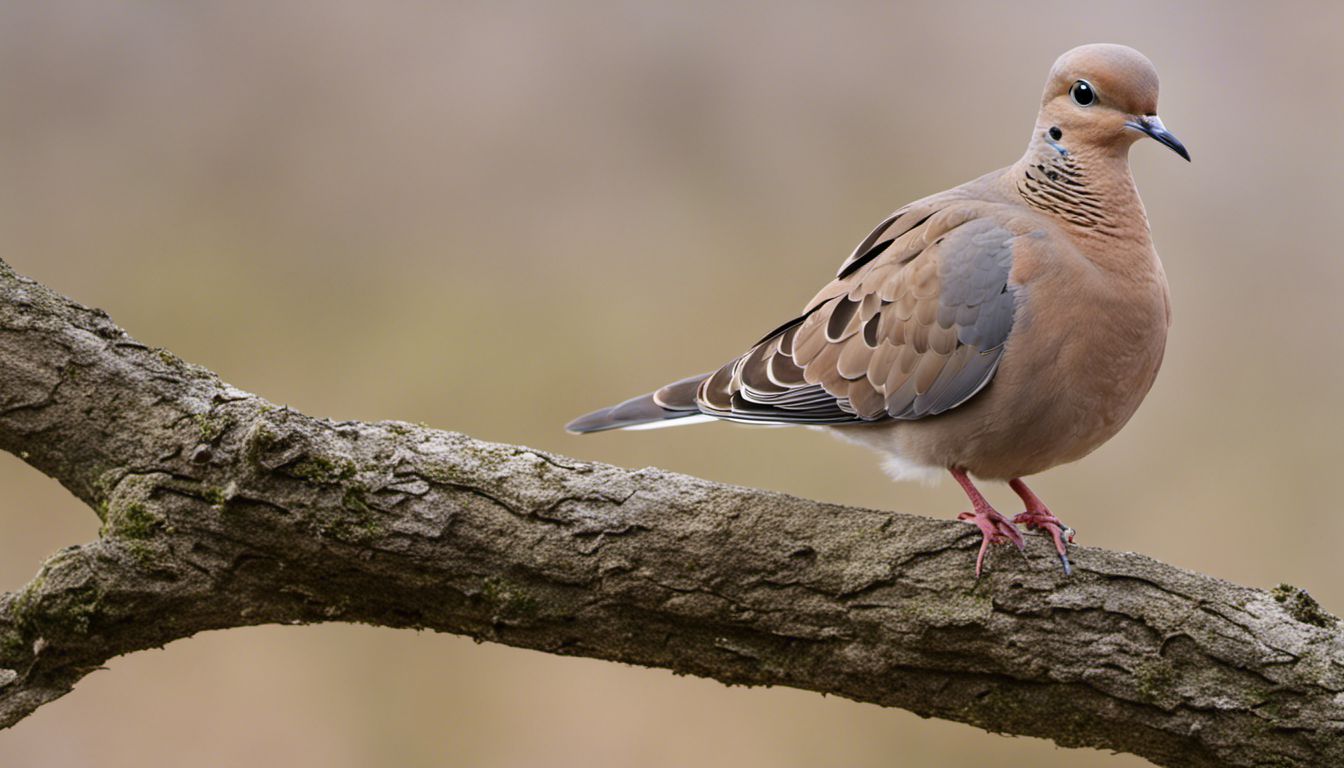A mourning dove makes a soft, mournful, cooing sound that is often mistaken for an owl, and it also makes a distinctive wing whistle sound during flight. Its sounds are unique among birds and provide a useful tool for identifying it in the wild.
- Identifying the Sound of Mourning Doves: The mourning dove makes a mournful, cooing sound. This distinctive call often gets mistaken for that of an owl because of its similar low, haunting tone.
- The Unique Wing Whistle of Mourning Doves: Besides their cooing sound, mourning doves also produce a unique wing whistle during their flight. This sound is produced as air passes through the feathers of their wings, creating an unusual noise during take-off and landing.
- Comparison of Mourning Dove Sounds with Other Birds: The sounds of mourning doves are unique among birds. The combination of their soft cooing and the wing whistle distinguishes this bird, making it easy to identify even without visual contact.
1. Identifying the Sound of Mourning Doves

Recognizing the sound of the mourning dove can enrich your bird-watching or nature experiences. These birds have a unique, easily identifiable sound that distinguishes them from other bird species. In particular, the mourning dove’s call is often described as a mournful “coo-ah, coo-coo-coo” or “coo-OO-oo”.
This characteristic cooing sound is generally produced by males to attract females during the mating season. Additionally, this sound can also serve as a territorial warning to other males, signaling that the area has already been claimed.
| Mourning Dove Sound Characteristics | Notes |
|---|---|
| Coo-ah, coo-coo-coo | This is the most common noise produced by mourning doves. Predominantly made by males, it is often seen as a mating call or territorial display. |
| Coo-OO-oo | Another variation of the mourning dove’s cooing sound, also demonstrating the bird’s unique, mournful tone. The repetitive, rhythmic nature of the sound makes it easily recognizable. |
2. The Unique Wing Whistle of Mourning Doves

Another distinguishing sound attribute of mourning doves is their distinctive wing whistle. This sound, audible during the bird’s flight, is in contrast to the soft cooing sound they generally make.
The phenomenon of wing whistling is unique to the mourning dove among the dove family. This sound is made as air passes through their wing feathers during take-offs and landings, and sometimes during in-flight maneuvers. Experts suggest that this wing whistle may serve as an alarm, warning other mourning doves of potential danger.
| Mourning Dove Flight Sound | Description |
|---|---|
| Wing Whistle | A unique sound, produced as air rushes through the bird’s wing feathers during flight, particularly during take-off and landing. This whistle is not a form of communication but rather a byproduct of their flight mechanics. However, it is speculated to function as an alarm for nearby mourning doves. |
3. Comparison of Mourning Dove Sounds with Other Birds

Differentiating the sounds of various bird species can be challenging, especially when they have similar vocalizations. This is particularly true when comparing mourning doves with pigeons and owls, as their sounds can be somewhat similar.
However, consistent observation and attention to nuances can aid in distinguishing these species by their sounds. For example, mourning doves have a more mournful, cooing sound, and they also produce a wing whistle sound during flight, unlike the other species.
| Bird Species | Sound Description | Key Differences |
|---|---|---|
| Mourning Doves | Mourning doves make a distinct, mournful, cooing sound, plus a unique wing whistle during flight. | Their sounds are softer, more mournful, and the wing whistle stands them apart. |
| Pigeons | Pigeons also coo, but their sound is generally louder, perkier, and steady. | Pigeons lack the wing whistle sound and their cooing is less mournful. |
| Owls | Owls hoot, and their sound can be deep, resonant, and very diverse depending on the species. | Owls have a larger variety in their vocalizations, and they do not make a cooing or a wing whistle sound. |

